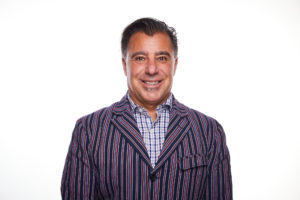
The pandemic has driven skilled nursing operators to become more collaborative, but federal and state government officials must make a similar shift if they hope to maintain access and improve quality in the nation’s nursing homes, says Cascadia Healthcare’s Steve LaForte.
Idaho-based Cascadia grew from 16 facilities to 37 in a 2½ year-period ending this August and remains growth-oriented. It has now become the largest operator in Idaho with 22 buildings there, eight in Washington, and a handful sprinkled across Arizona, Montana, New Mexico and Oregon.

After launching in 2016 as a turnaround operator for CareTrust, the chain today owns 10 of its own buildings and is looking to grow as an owner-operator. Where it does that, and how quickly, will be driven largely by the willingness of the states it serves to fund skilled care at reasonable levels, and by local and federal regulatory outlooks.
The company shelved recent plans for what would have been its third new construction project because of rising construction and interest costs. Negotiating for troubled buildings with low occupancy or checkered compliance histories is also becoming more challenging as Medicaid rates flounder in many parts of the country.
“We’re still looking to grow and have a more stable base,” says LaForte, Cascadia’s director of corporate affairs and general counsel. “We see a ton of deals, and we turn down the super-duper majority of them. We don’t get into bidding wars on deals. If that’s what’s going to happen, we don’t play that game. We try to find off-market deals. We try to find deals where we can craft something that works.”
Cascadia’s model is to then pour leadership resources into a building. But LaForte said the company doesn’t want to overextend at the front end of a deal, nor be unable to collect payment to stabilize a building for months and years ahead.

The two key factors in that: Ensuring that Medicaid rates are healthy enough to cover investments in staff and needed facility upgrades, and a culture good enough to attract and retain local leadership.
“When we look at acquisitions and look at turnarounds and value-adds, one thing that’s important is … can we make a difference in a community? Can we save access? Can we save jobs?” he adds. “Part of that equation is, do we have the leadership to put in the building, and part of the equation is, can we make it work on a pro forma basis. Is this something we’ll be able to turn around?”
Capitalizing on cast-offs
Cascadia has made a habit of finding underappreciated buildings, or those that might be outside their owner’s core focus. It did so in picking up one Montana building from the troubled Lantis family portfolio and three Consulate buildings, including a Special Focus Facility designee close to being decertified. It also assumed operations of several former Kindred buildings as that company looked to shed some skilled assets.
In another case, Cascadia picked up a former Orianna building that included the only ventilator unit within 300 miles in Idaho. It was on a federal watch list, close to replacing another Cascadia building that was just about to graduate from the Special Focus Facility list.
“At one point in its history, it had been a really respected building in the community and it was the only vent unit, so there was a way to fulfill a need and to fulfill access in that building,” LaForte noted.
Idaho, despite being challenging on the regulatory side, offers Medicaid rates that have previously made provider turnarounds doable. Similarly, LaForte said that Montana has reimbursements averaging around $210 per patient day and a regulatory and legislative environment that has been receptive to providers’ concerns. That take, despite closures representing 10% of the state’s beds this year.
The picture is darker in other states.
Cascadia’s business strategy is to weigh opportunities west of Colorado’s eastern border.
Many of the deals it sees include troubled rural facilities, many of which might be on the federal watch list. With the Centers for Medicare & Medicaid Services announcing last month that it was beefing up scrutiny of its Special Focus Facilities, many providers may be less likely to consider investing in SNFs that might be headed for program inclusion.
“It’s going to make you think not twice, but three times or four times,” LaForte explains. “It’s frustrating to me that CMS doesn’t look at this in a more holistic way, not just, how do we punish bad actors? Nobody at Cascadia is going to argue that bad actors shouldn’t be weeded out of the industry. They should. [But many of these buildings], they’re in rural areas.
“You’re going to lose the access, and there’s no way to do new builds right now. They’re cost-prohibitive. So you’re losing care in those communities, and home health in those communities is not going to pick it up.”
Cue more collaboration
A policy wonk who started in healthcare as a SNF deal-maker, LaForte said the government should be focusing on collaboration rather than retribution to keep the sector healthy.
He points to lessons learned from the pandemic that have brought skilled nursing facilities closer to each other and to their hospital partners as they looked for solutions.
In Idaho, for example, Cascadia was the only skilled operator to create a designated COVID unit. The company took over a Boise building closed in early 2021 by Good Sam and extended a license from another building under a PHE waiver. The local hospital then had a place to send recovering patients. Cascadia also tapped into hospital nursing staff to cover some open shifts as labor shortages became more dire.
“That led to a lot of really good collaborative conversations with the hospital systems,” LaForte said. “There’s been so much collaborative discussion, it’s maintaining. Even on workforce, it’s maintaining.”
So, why, he asks, isn’t the federal government more interested in collaborative strategies? Like many providers, he feels the positioning of the administration over the last year is a cheap and easy win politically, but one that has a potentially devastating impact on the ability of seniors and others with disabilities to find care close to home.
He has worked in the past with AHCA Senior Vice President of Quality and Regulatory Affairs David Gifford, MD, to propose a new use of civil monetary penalties. Instead of holding them in hard-to-access grant programs, CMS could direct the collected funds back out to providers who then have to use them in a prescribed manner under third-party monitoring.
“Why can’t we go back to the drawing board and do this? … If what we’re talking about is quality care, benefiting residents, taking a CMP out of a building that’s already got issues doesn’t do it. It just makes (the building) weaker,” he explains.
“If what we’re trying to do is ensure healthcare, ensure access, ensure quality, there’s a way to get at it,” he adds. “Some of it is regulatory, but some of it is collaborative. “Why can’t we come up with programs that incentivize quality, that incentivize operators to take on turnarounds?”




